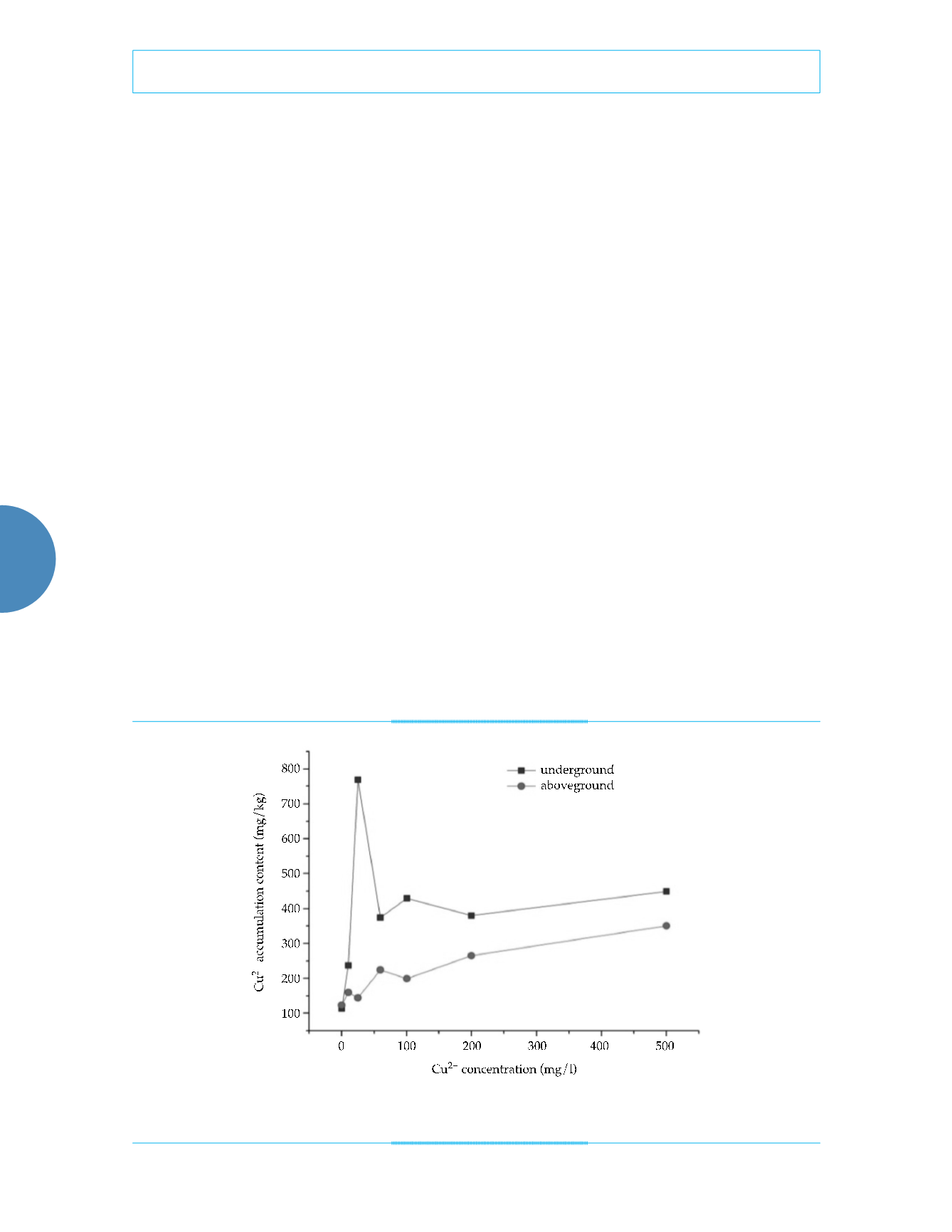
48
Tecnología y Ciencias del Agua
, vol. VIII, núm. 2, marzo-abril de 2017, pp. 43-50
Luo
et al.
,
Phytoextraction potential of wetland plants for Copper in Water Bodies
•
ISSN 2007-2422
Figure 3. The correlation between Cu
2+
accumulation content in
Phragmites australis
and Cu
2+
concentration.
Cu
2+
accumulation contents in plants reaches
a maximum with the increase of Cu
2+
concentra-
tion in hydroponic solution. Cu
2+
accumulation
contents in plants decreased if the concentration
exceeded the optimum enrichment concentra-
tion, indicating that the toxicity of heavy metals
to plants has exceeded its tolerance, inhibiting
plant growth and halting the accumulation of
Cu
2+
.
The Cu
2+
enrichment amount in the aboveg-
round of reed increased with the increase of
Cu
2+
concentration in the solution through the
correlation analysis curve (figure 3). Cu
2+
ac-
cumulation content showed slight fluctuations
at low concentration processes (10, 25, 60 and
100 mg/l), but Cu
2+
accumulation significantly
increase as the hydroponic solution of Cu
2+
concentration increased. Therefore,
Phragmites
australis
showed good Cu
2+
tolerance. Cu
2+
content in the underground parts of reed gently
increased as hydroponic solution Cu
2+
concen-
tration increased, showing a positive correlation
relationship. The enrichment amount of Cu
2+
in
the underground part was significantly more
than that in the aboveground part. As can be
seen from figure 3, Cu
2+
accumulation contents
in the underground portion of reed fluctuated
under low Cu
2+
concentrations. As Cu
2+
content
increased, Cu
2+
content stabilized and Cu
2+
con-
tent reached its maximum in reeds.
The absorption of copper by calamus was
higher than that of reed at seven concentration
processes, but reed tolerance to high Cu
2+
con-
centration was higher than calamus. Therefore,
calamus is suitable for the ecological restoration
of plants for medium and low concentration of
heavy metal polluted water bodies.
According to the results of correlation analy-
sis between Cu
2+
content in plants and Cu
2+
concentration in the hydroponic solution, the
Cu
2+
accumulation content(y) in aboveground
and underground parts of
Acorus calamus
and
Phragmites australis
increased as Cu
2+
concentra-
tion (x) increased; there was a significant posi-
tive correlation (table 4). Thisindicated that the
concentration of heavy metals in the growing
medium plays an important role that impacts
plant absorption and heavy metal accumulation.
Cu
2+
primarily accumulates in plant roots
(Stolts & Gregor, 2002). This is because Cu
2+
in
roots is the primarily forms from precipitation.
Additionally, there is ionic and complex states


